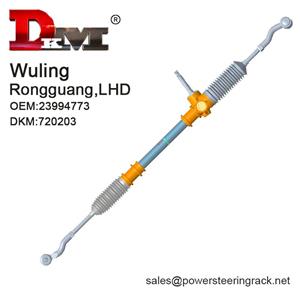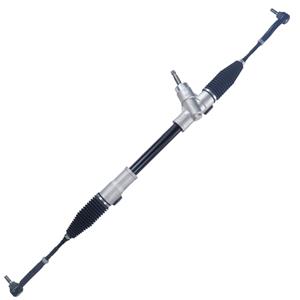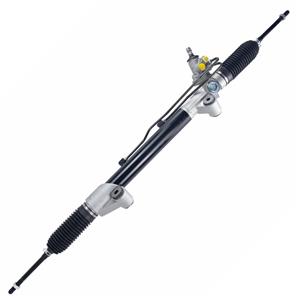Can I flush the hydraulic power steering system?
As one of the core components of modern cars, the hydraulic power steering system (HPS) is responsible for helping drivers operate the steering wheel easily. It converts the engine power into hydraulic energy through a hydraulic pump, and then provides steering assistance through the steering rack.
The hydraulic fluid in the system plays a vital role, not only providing the required power support, but also assisting the lubrication, sealing and cooling of the system. In order to ensure the long-term and stable operation of the hydraulic power steering system, regular maintenance and care are essential.
During the maintenance process, some car owners may ask: "Can I flush the hydraulic power steering system?" This sounds like a simple question, but the content involved and the possible impact are far more than that.
In order to answer this question, we need to understand in detail the working principle of the hydraulic power steering system, the necessity of cleaning, the way to clean it, and how to avoid potential risks.

How does the hydraulic power steering system work?
The hydraulic power steering system consists of several important components, including hydraulic pumps, steering racks, hydraulic oil, pipes and seals. These components work together under the drive of the engine to provide the driver with stable and smooth steering assistance. The hydraulic system relies on hydraulic oil to transmit and regulate fluid pressure to provide the required power to the steering rack.
When the driver turns the steering wheel, the hydraulic pump obtains power from the engine through the drive belt, pumps the steering fluid through the pipeline to the steering rack, and the generated hydraulic pressure is converted into mechanical force to push the wheel through the rack. Hydraulic oil circulates in the system and plays the role of transmitting force, lubrication and sealing.
What is the use of hydraulic oil in hydraulic power steering system?
Hydraulic oil is the "blood" of the hydraulic power steering system. It circulates continuously in the system and performs multiple functions. Hydraulic oil not only needs to have sufficient fluidity to efficiently transmit power, but also needs to have good lubricity to reduce friction and extend the life of the system. In addition, hydraulic oil also has a cooling effect to help the system dissipate heat and prevent overheating.
As time goes by, hydraulic oil may gradually become dirty, and when pollutants and air enter the system, the viscosity of the oil may change, which will affect the performance of the system. If the hydraulic oil is not replaced or cleaned in time, it may cause wear, corrosion or blockage of components such as the steering pump and steering rack, which will affect the normal operation of the steering system. Therefore, regular replacement of hydraulic oil and cleaning of the hydraulic system have become necessary measures to ensure the efficient operation of the hydraulic power steering system.

Why flush the hydraulic power steering system?
The hydraulic oil of the hydraulic power steering system may be contaminated over time. The sources of contamination mainly include:
· Impurities and dirt: During long-term use, hydraulic oil is prone to absorb impurities such as dust and metal particles in the air, which can damage the hydraulic system.
· Hydraulic oil aging: Hydraulic oil will oxidize and deteriorate when used for a long time under high temperature and high pressure, resulting in reduced lubricity and cooling. The additives in the oil will gradually decompose and fail to play the expected protective role.
· Water and moisture: Moisture and moisture in the hydraulic system will mix with the hydraulic oil to form an emulsion. Moisture not only reduces the performance of the oil, but also causes corrosion and rust of steering system components.
·Wear and falling particles: Seals, pumps, pipes and other parts in the hydraulic system may wear out during use, causing small particles to fall off. These particles will enter the oil and affect the cleanliness of the hydraulic oil.
Therefore, flushing the hydraulic power steering system can help remove pollutants, impurities and accumulated moisture in the hydraulic oil, restore the normal working state of the system, and extend the service life of the system.

How to flush the hydraulic power steering system?
Although flushing the hydraulic power steering system can clean the pollutants in the system and restore the normal function of the system, this work is not simple and must be carried out strictly in accordance with certain methods. Here are some common ways to flush the hydraulic power steering system:
1. Use a dedicated hydraulic system cleaning agent
There are cleaning agents specifically used for hydraulic system cleaning on the market. This type of cleaning agent can help remove impurities and contaminants in the oil and restore the cleanliness of the system. When using a hydraulic system cleaning agent, it is generally necessary to follow the instructions in the manual:
·Drain the original hydraulic oil: First, drain the old oil in the hydraulic system to avoid mixing the new oil with the old oil, which will affect the cleaning effect.
·Add cleaning agent: Add an appropriate amount of cleaning agent to the hydraulic system according to the instructions for use of the cleaning agent.
·Operate the system: Start the engine and let the hydraulic pump work to ensure that the cleaning agent circulates in the system. After a few minutes of operation, the cleaning agent will remove impurities, dirt and aged oil in the system.
·Drain cleaning agent: After cleaning, turn off the system and drain the cleaning agent.
·Add new hydraulic oil: Finally, add new hydraulic oil to restore the normal operation of the system.
2. Manual flushing
For some small vehicles or simple hydraulic systems, car owners can choose to clean the hydraulic system by manual flushing. The basic process of this method is as follows:
·Drain the old oil: Drain the old oil in the hydraulic system.
·Add cleaning fluid: Use cleaning fluid or special hydraulic oil cleaning agent and add it to the system in a certain proportion.
·Circulation operation: Start the engine and let the hydraulic pump start working to ensure that the hydraulic oil flows in the system, thereby taking away the contaminants in the system.
·Drain cleaning fluid: Stop the engine and drain the cleaning fluid.
·Replace new oil: Finally, add new hydraulic oil to ensure the normal operation of the system.
3. System flushing and oil filter replacement
In addition to cleaning the hydraulic oil itself, you can also regularly replace the oil filter in the hydraulic system. The function of the oil filter is to filter impurities and contaminants in the hydraulic oil. Therefore, timely replacement of the oil filter is an effective means to keep the system clean. When flushing, ensure that the oil filter in the system is cleaned or replaced to prevent residual contaminants from affecting the quality of the new oil.

What should be paid attention to when flushing the hydraulic power steering system?
Although flushing the hydraulic power steering system can effectively remove contaminants and restore system performance, it may also bring some risks if it is not done properly. Therefore, when cleaning the system, car owners should pay special attention to the following aspects:
1. Choice of cleaning agent
When using cleaning agents, be sure to choose special cleaning agents suitable for automotive hydraulic systems. There are many types of cleaning agents on the market. If they are not used properly, they may cause damage to seals, pipes, etc. in the hydraulic system, and accelerate the aging of the system.
2. Avoid air entering the system
During the cleaning process, be careful to avoid air entering the hydraulic system. Air can affect the operation of the hydraulic pump, causing problems such as shaking and abnormal noise in the steering system. If air enters the system, additional exhaust operations may be required, increasing repair costs.
3. Use the right oil
After cleaning, the system should be refilled with the appropriate hydraulic oil. Different models and different types of hydraulic systems have different requirements for oil. Car owners should follow the manufacturer's recommended oil specifications to ensure that the hydraulic system can achieve the best working performance.
4. Regular inspection and maintenance
Even after cleaning, regular inspection and maintenance of the hydraulic power steering system cannot be ignored. Keep the oil inside the hydraulic system clean, replace aging oil and oil filters in time, and regularly check components such as hydraulic pumps and steering racks to ensure the stable operation of the system.
Where are your products sold?
Our steering racks and steering wheel units are sold domestically to China’s OEMs and dealerships, and we hold a strong international presence in markets such as the USA, Italy, Ukraine, Russia, Southeast Asia, and the Middle East. As a reputable Chinese manufacturer, we offer quality-assured, low-cost, and wholesale steering components to global buyers.
If you’re purchasing steering parts in bulk or looking for discounted quotes from a factory-direct supplier, DKM is your ideal manufacturer partner.




